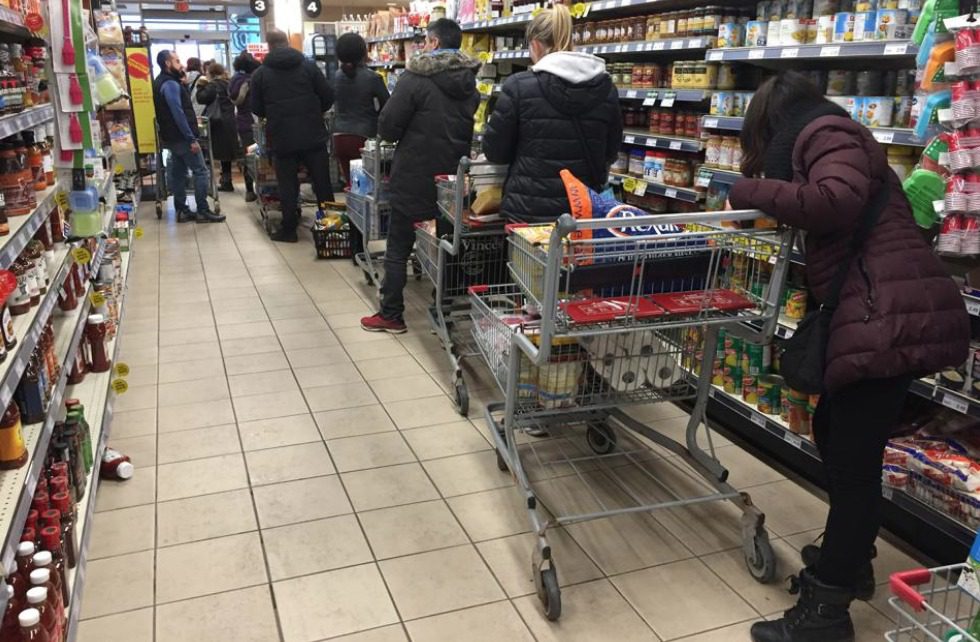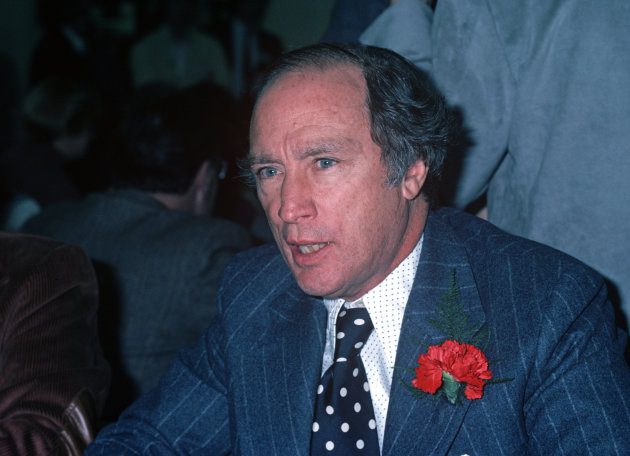Eleven months is an excruciatingly long time, it turns out. But that's how long we've been living in the pandemic. And it's also how we've been swirling around the same attitudes.
Take this week when a video of an absurdly long line at a York-region Homesense started circulating on Twitter. Outrage was rampant. 'How could people be so selfish to go get home decor — in a pandemic, no less!' the tenor of the outrage went.
Ultimately, this line of thinking buys into what premiers have been trying to sell from the start: the severity of the pandemic is our fault, not theirs. People are doing something explicitly permitted by the government, so what's the use at getting upset at them?
For months now, leaders have tried to voluntarily curb our activities for the good of safety, while at the same time refusing to make those suggestions orders until well after it's clear the voluntary measures have failed.
So why are we so mad at these people?
I can't help but feel the outrage is misplaced. People have been taking the implicit message in the decision to re-open stores: It wasn't safe before, but it is now. Why else would stores be open?
The people to blame for this aren't standing in line, they're sitting in Queen's Park.
By pointing anger at the individuals in line, you're letting Premier Doug Ford coast on his decision to open things up. Diffuse anger is a useless political force. It's not going to accomplish anything, and it's not going to make you feel any better.
There is a line somewhere that separates what is unacceptable even if it is permitted. Besides, expecting us to get out of this pandemic with a reliance on people's perfect selflessness just isn't going to happen. Not now, not anymore.
It might have been possible earlier in the pandemic. There was a moment, a fleeting one, where "We're all in this together" didn't seem like completely naive bullshit.
That time has long passed. We've seen now the craven underbelly of our own rotten world. And that cravenness is most fetid right at the top.
Once the first reopening took place, there was a clear message from our leaders. If you're spending money, getting together with other people is just fine. There's nothing clearly happening in this video that's far outside the lines of public health guidelines. This isn't a mass of anti-mask lunatics, storming a mall. It's people waiting in a line, more or less on their distance marks. (Amusingly, the person who took the video is one of many people walking opposite to the direction arrows pasted on the floor.)
It's easy to get mad at a bunch of people lined up buying pillows and sheets and pictures for the living room wall. (It veers quickly into what you might call a bit of casual sexism, with sneering at "suburban wine moms.")
Shaming people hasn't proved to be a very useful tactic in fighting the virus. If it was, surely we would have tweeted our rage at random people and found our way out of COVID by now.
But we haven't.
We have been locked away in some form or another for these 11 months. That's an achingly long time. And so I'm having a difficult time seeing these people as the enemy.
Premiers have been giving us mixed signals for as long as COVID has been with us. The whole time, they've essentially been telling us to take the bus, all the while building highway lanes.
We know by now how ineffective it is to ask people to stop doing things voluntarily. If it isn't safe for people to be shopping, then shopping should not be permitted.
But it's not entirely clear to me this is the most egregious thing to be doing.
At some point the logic of "if it's allowed, people are fine to do it" breaks down. I'm not sure exactly where the line falls. Air travel, especially international pleasure travel, is clearly irresponsible. (This is why strict and costly quarantine measures make sense, even if they're months late in coming about.)
Indoor dining is another that probably falls beyond the pale even if it is allowed. But it probably shouldn't be allowed.
This is where things get fuzzy. And one of the big problems is we all have an internal line in the sand we've drawn. Where it lies can vary widely. I haven't had a meal inside a restaurant since last March, the night things really seemed to fall apart. But just last week I put on two masks and went for a haircut, soon after the barber opened up.
You wouldn't find me in a Homesense line that long, the place isn't my jam. You probably wouldn't find me in any place that is crowded right now, masks or not. I find it deeply uncomfortable to be among so many people for any length of time these days.
But I've waited in some pretty long grocery lines. Could I have gone at a different time? Maybe. Is that more acceptable because buying food is more important than buying housewares? Perhaps. But is there an actual difference in safety or risk if I'm waiting in an IGA instead of a Homesense? I'm not so sure.
This is why the individual responsibility model of pandemic response cannot work. This personal risk assessment we all take part in, deciding what is worth leaving the house for and what isn't, is no way to fight a collective problem like COVID.
We have governments with both the information and the power to know what is safe and what isn't. If they aren't doing their job, it's not the fault of the governed for that failure. The failure lies with the people making the decisions.
I'll save my ire for them.
Photo Credit: Forbes







